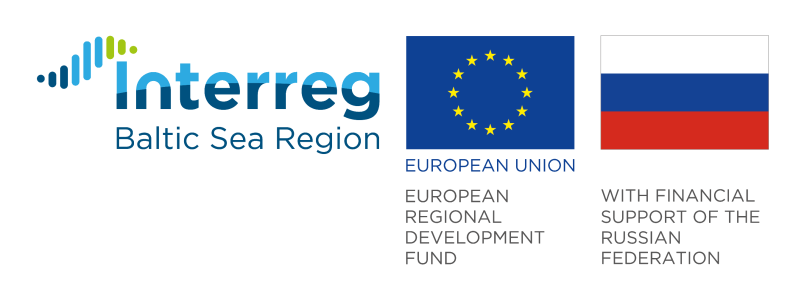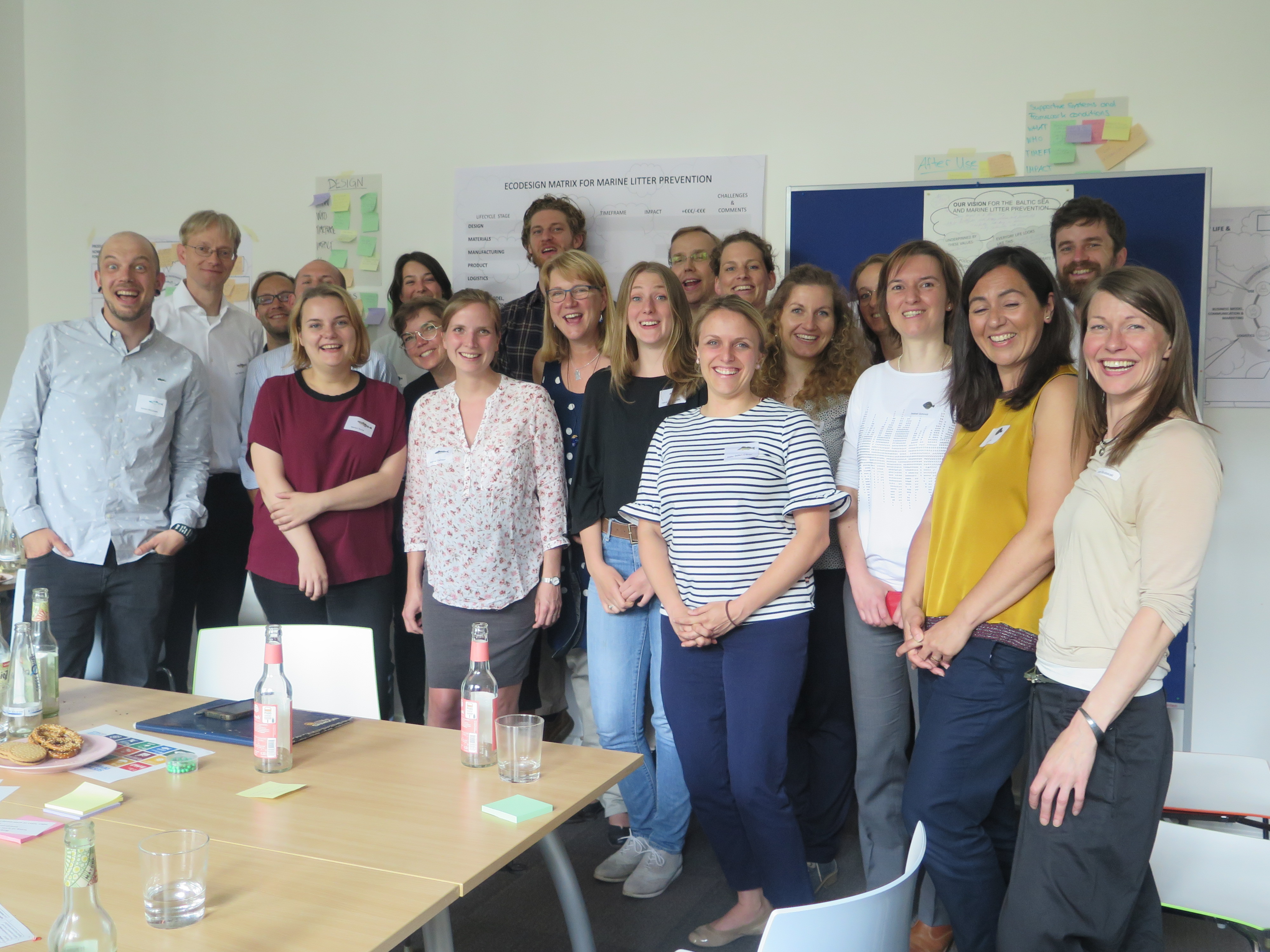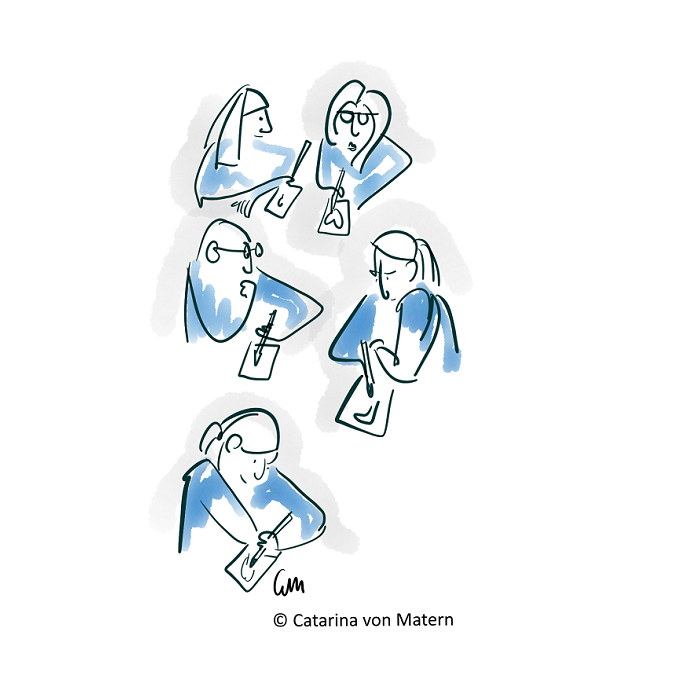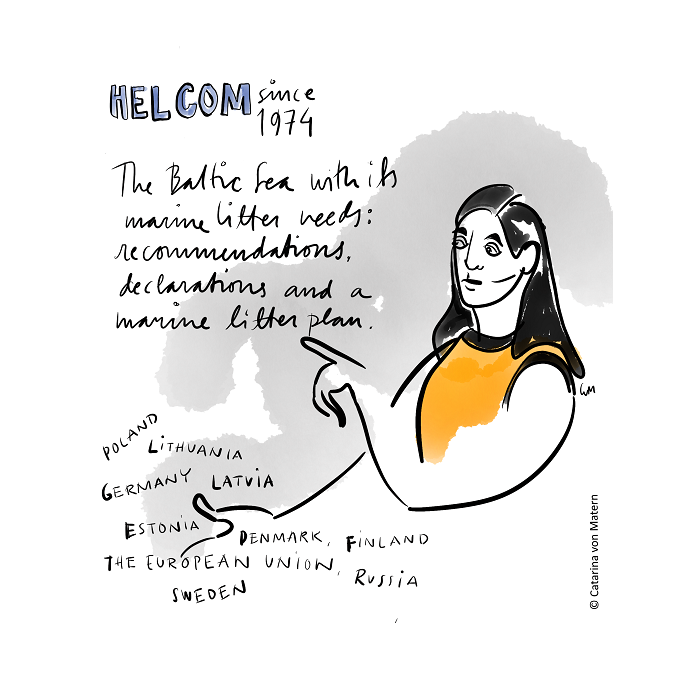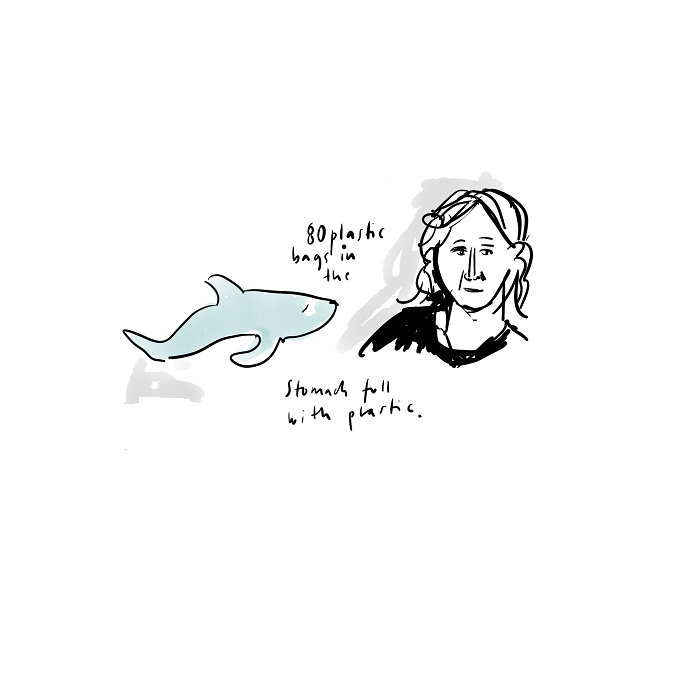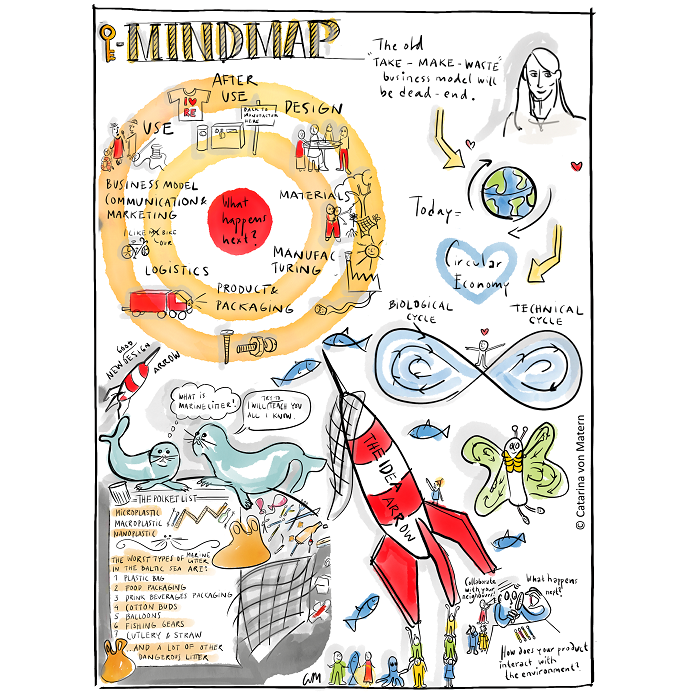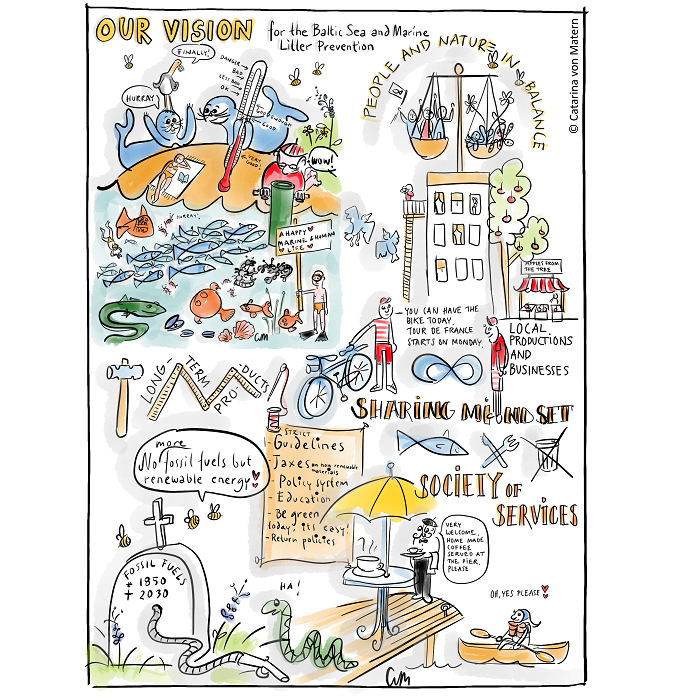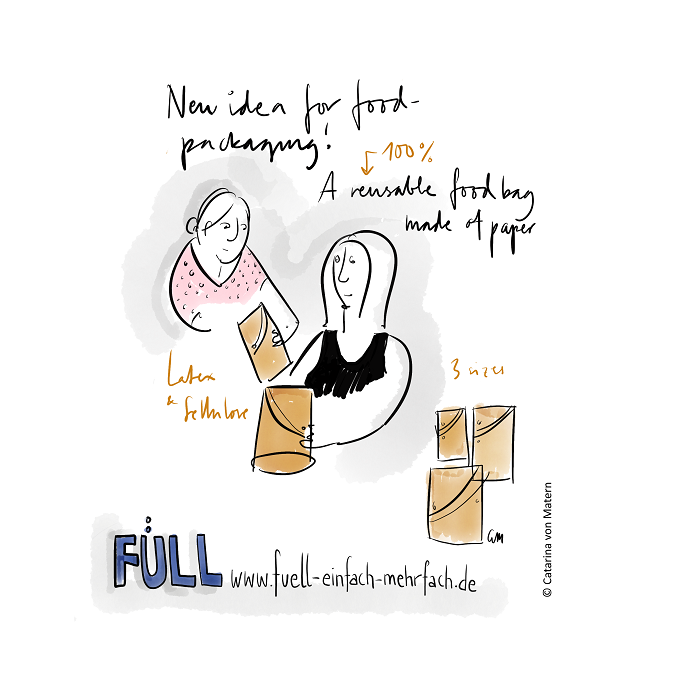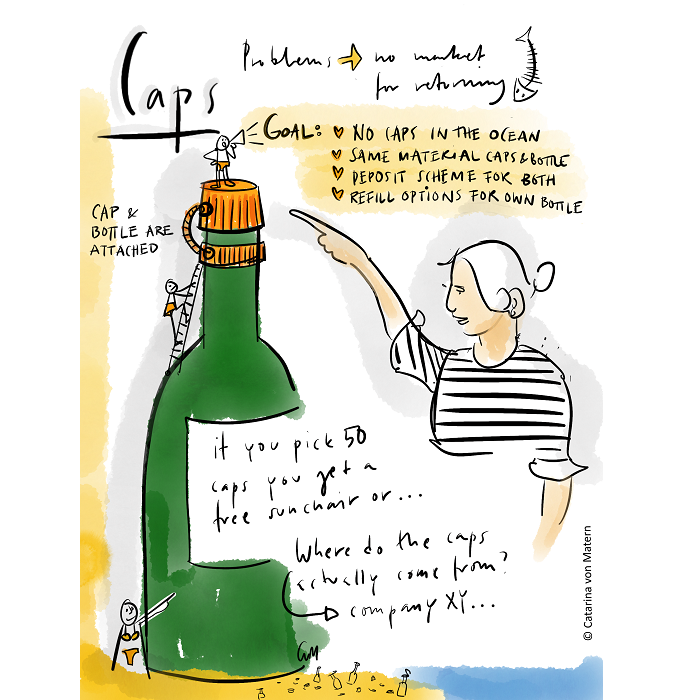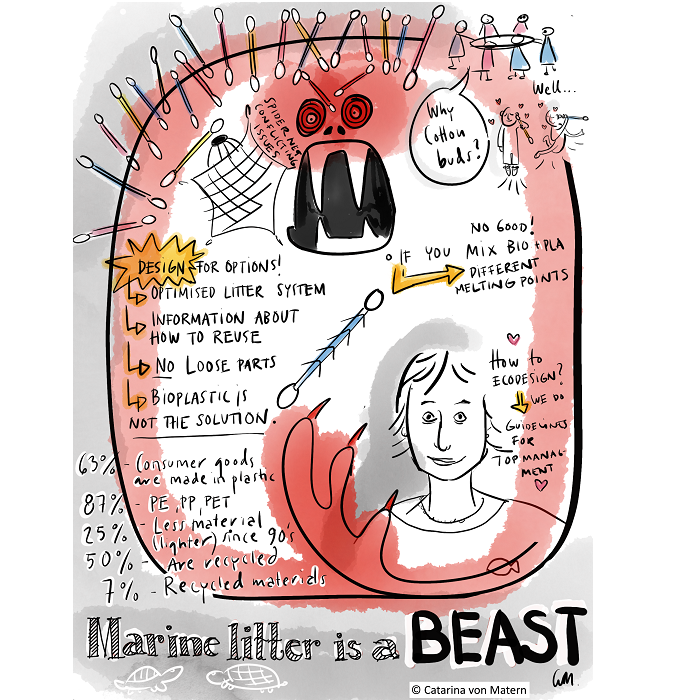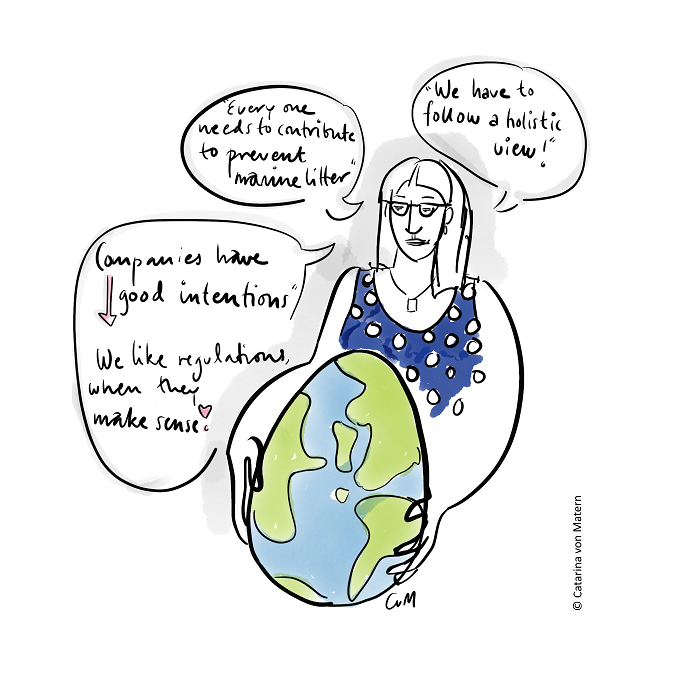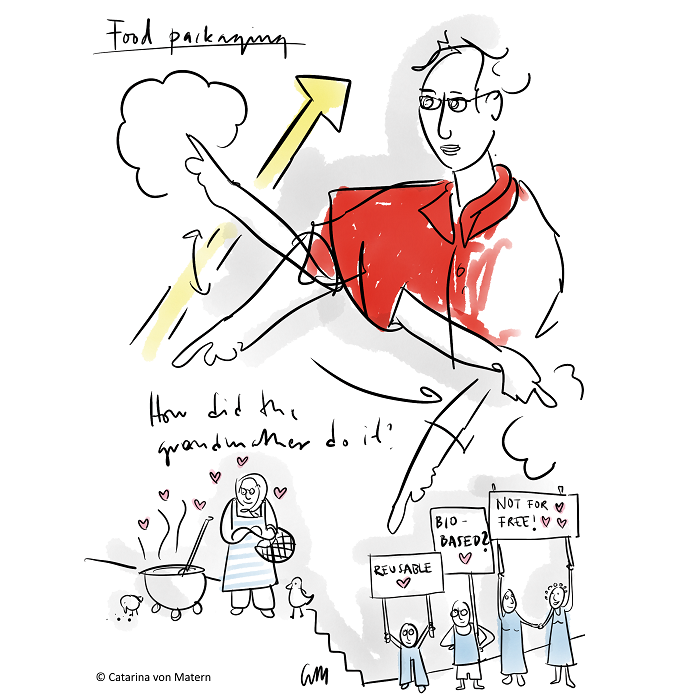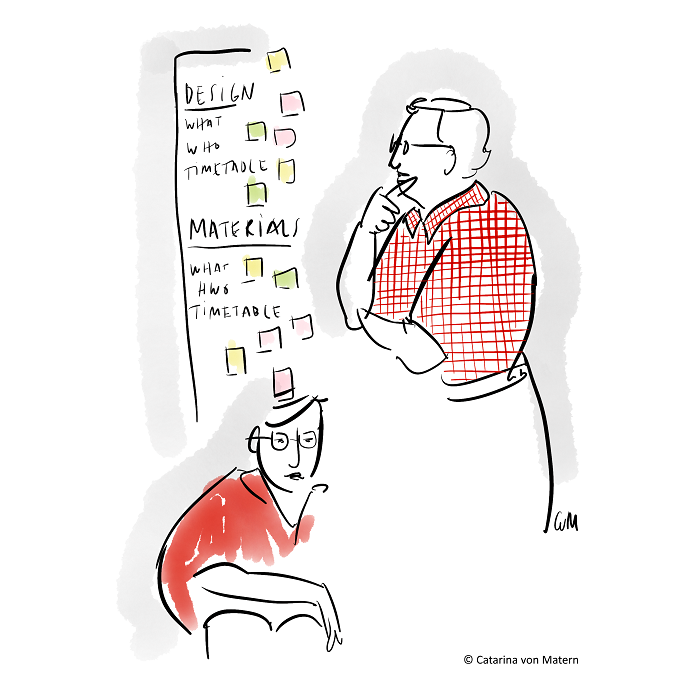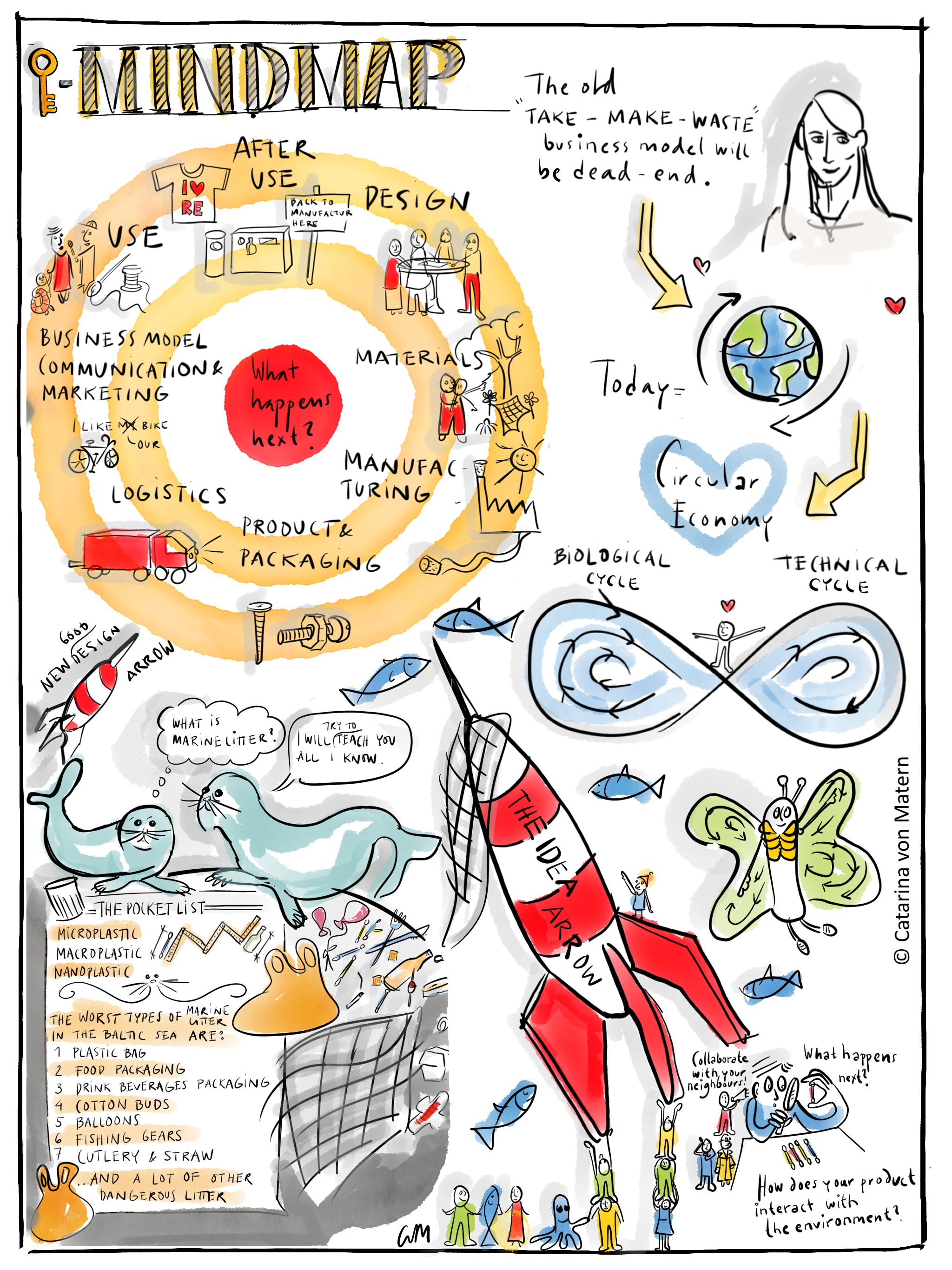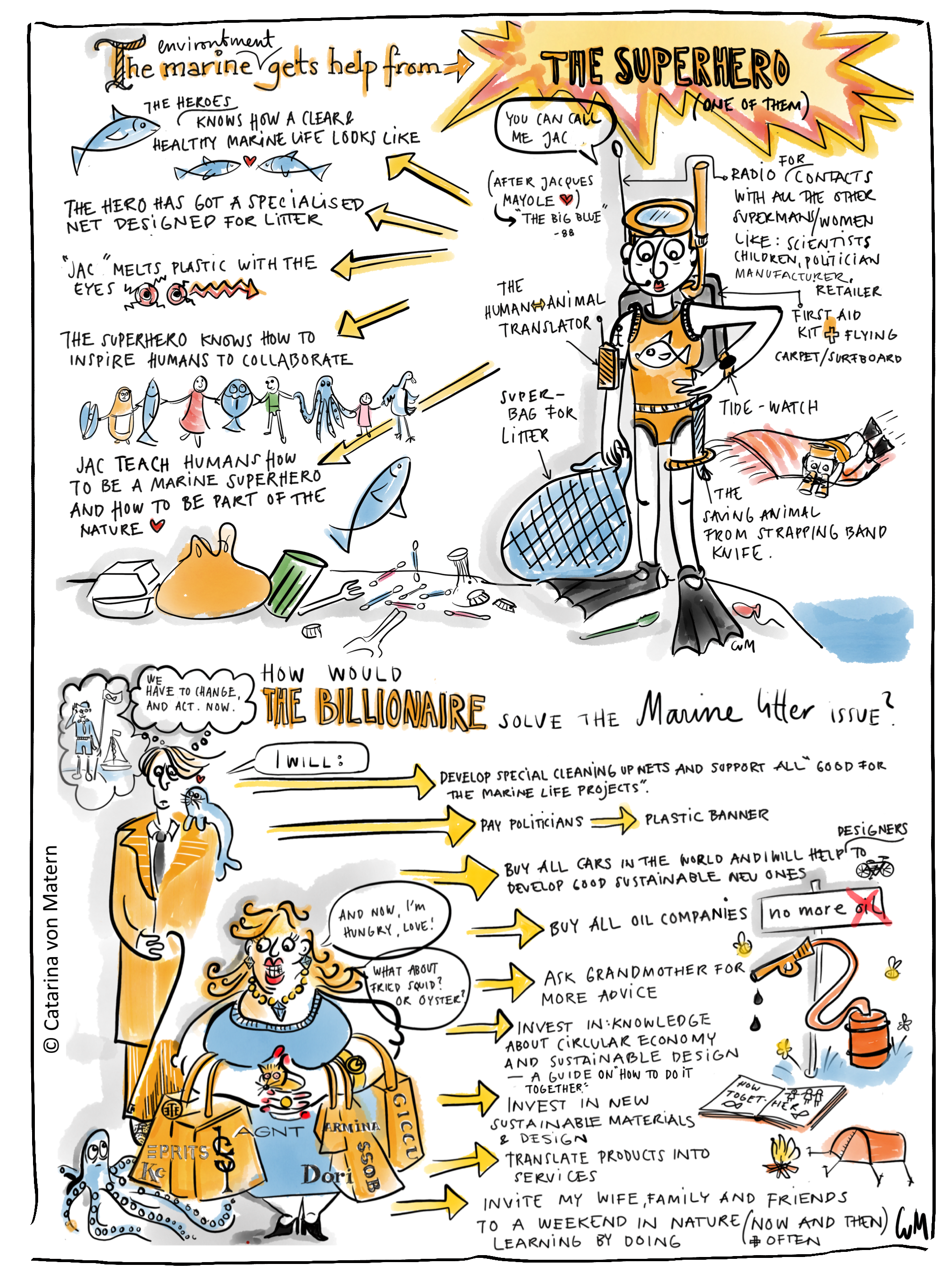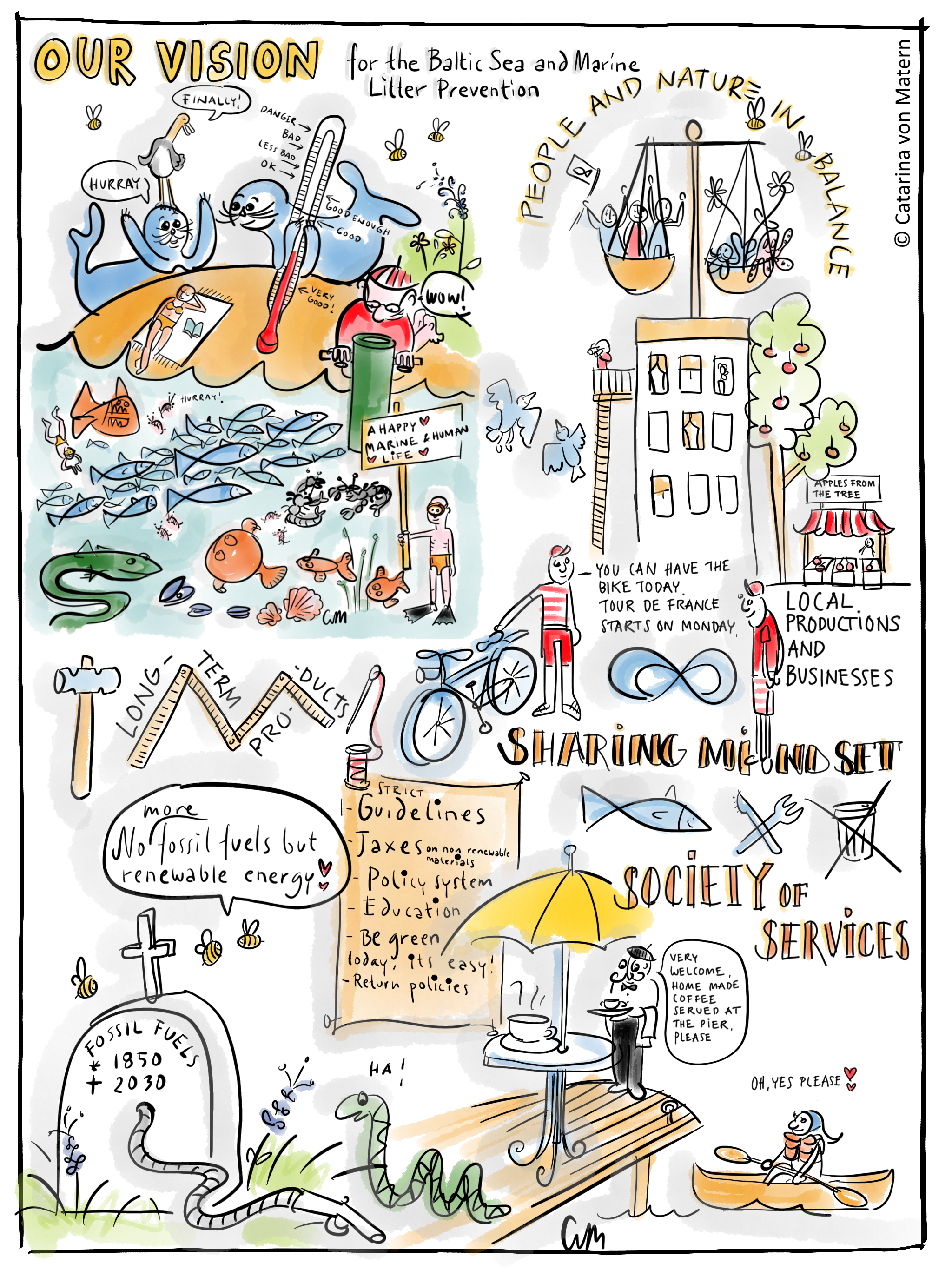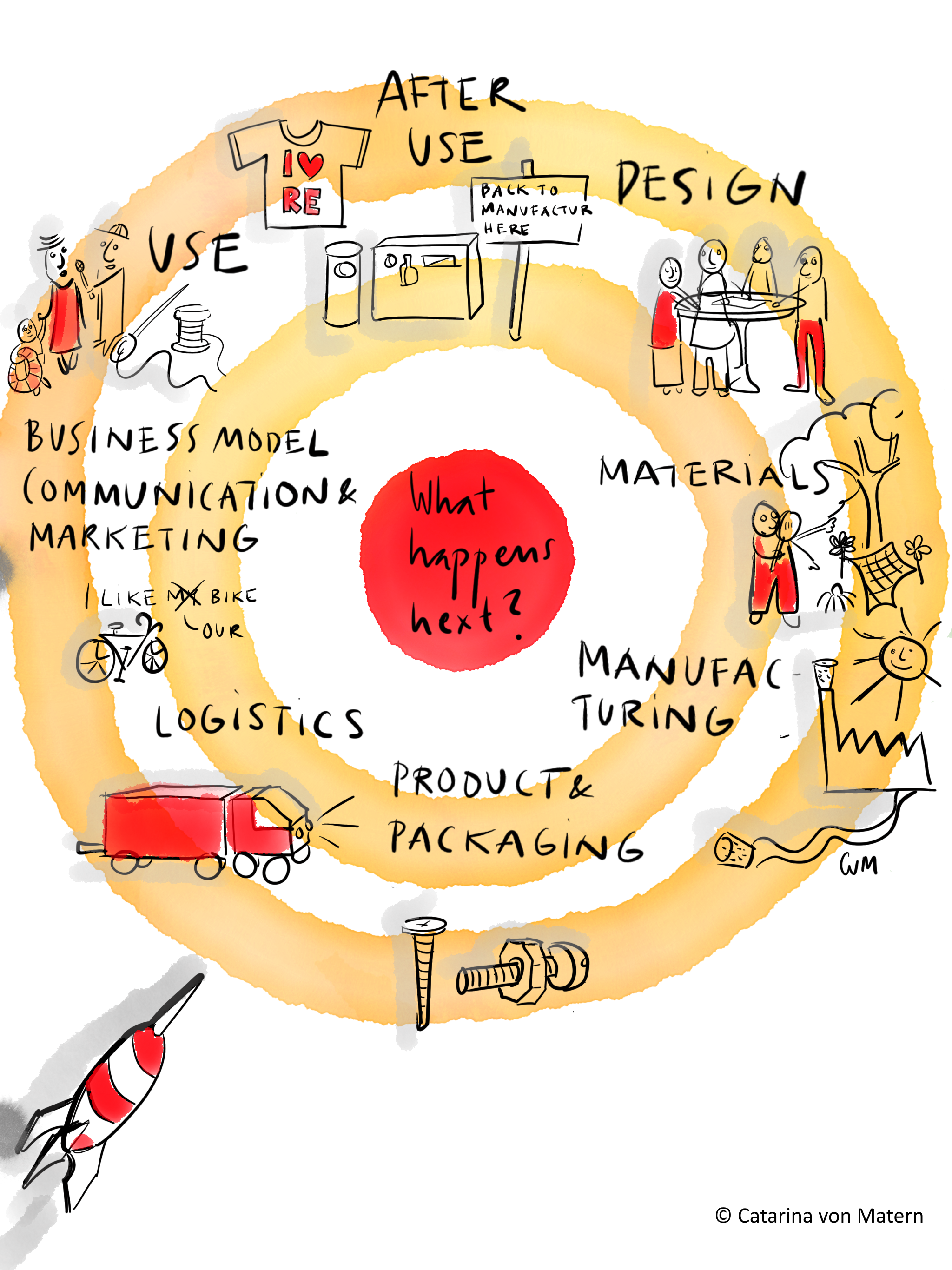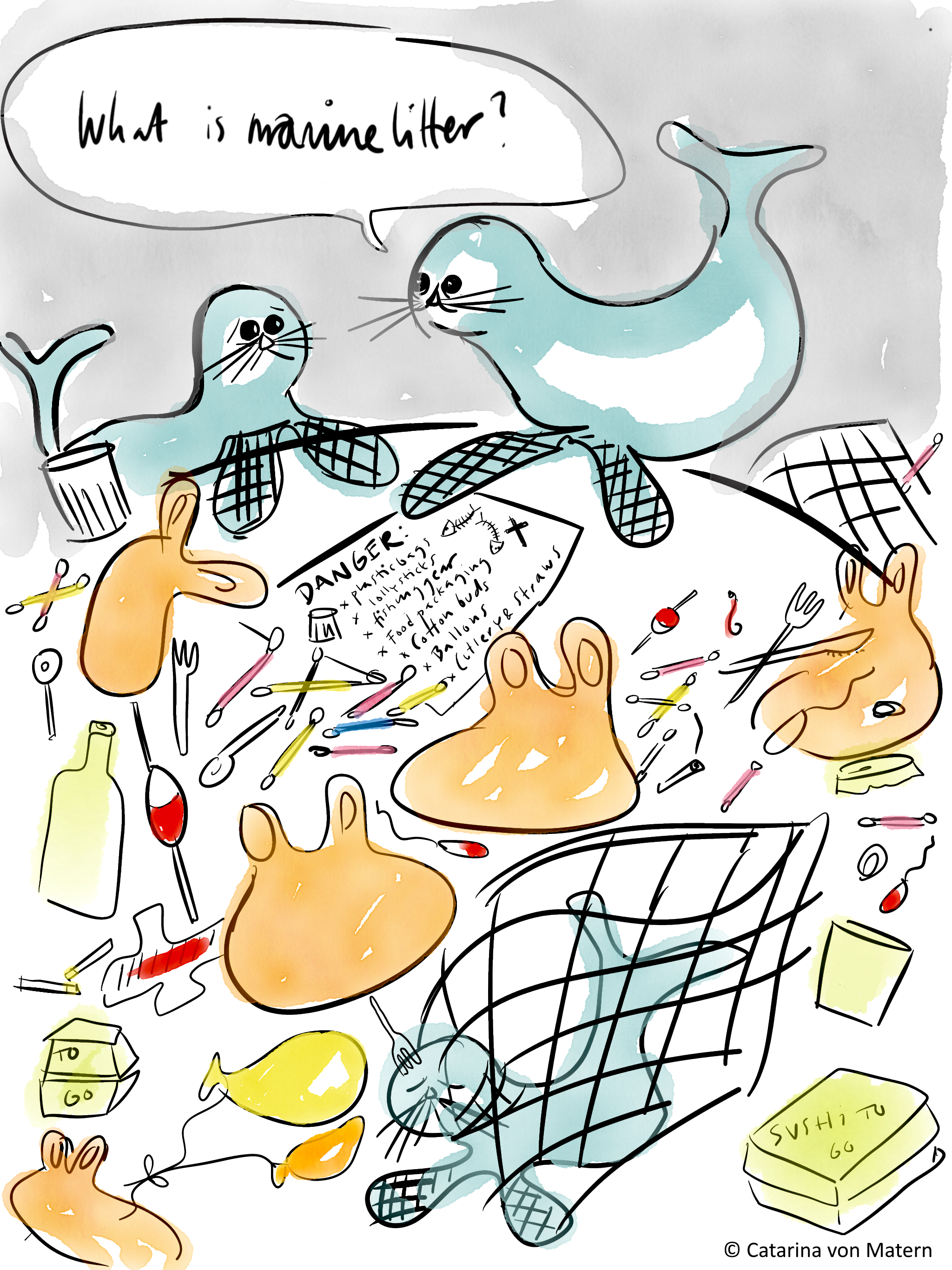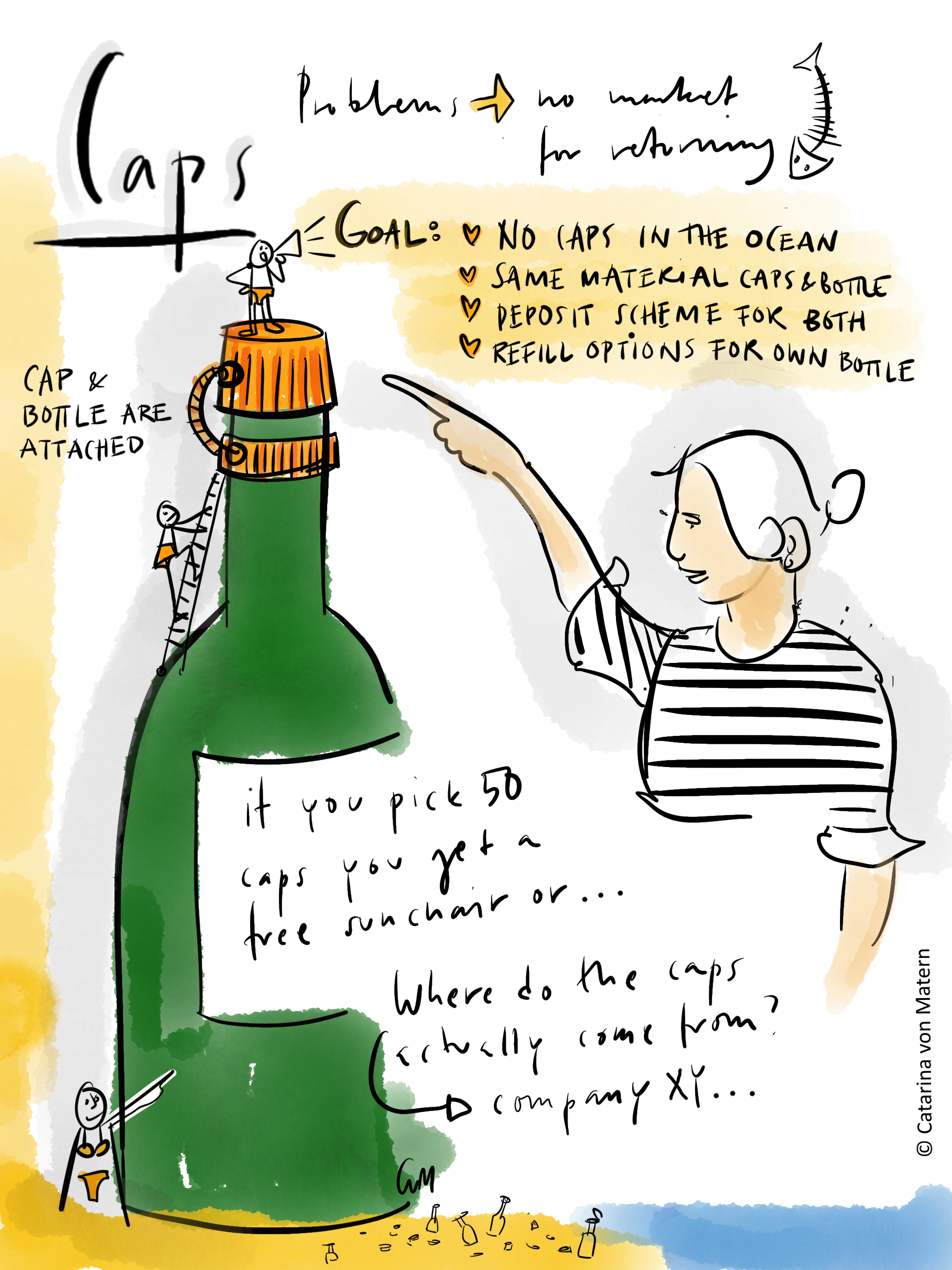It is estimated that that globally 4.7 million to 12.7 million tons of plastic waste enter the ocean annually from land. Marine litter significantly impacts the marine environment, its organisms as well as human beings.
To that end, HELCOM and the INTERREG Project “EcoDesign Circle” teamed up in order to organise a common workshop on ecodesign and marine litter on 15 June 2018 in Berlin, Germany.
- 1 - Background Information
- 2 - About The Workshop
- 3 - Visualisations
- 4 - Some Quotations
- 5 - Downloads
-
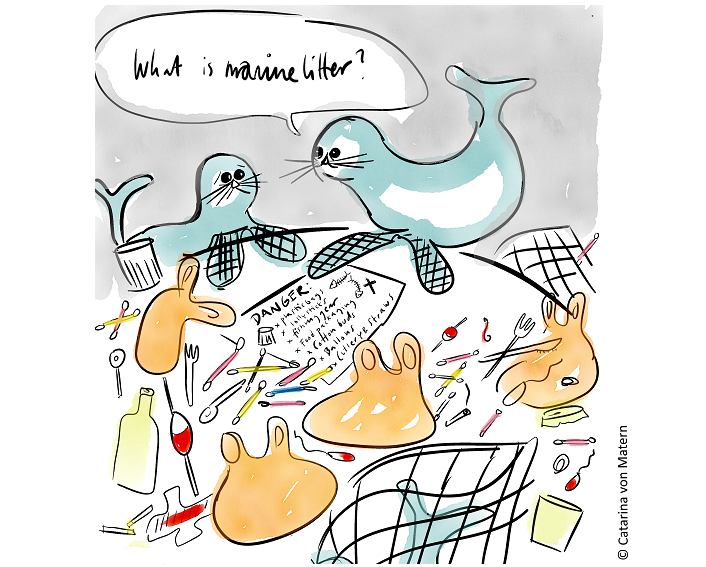
Baltic Sea & Marine Litter
The Baltic Marine Litter Interreg-Project MARLIN (2011 - 2013) comprehensively monitored reference beaches in Sweden, Finland, Estonia and Latvia. The numbers of items ranged from 76 items per 100m at rural beaches to 237 items per 100m at urban beaches with plastic as the biggest fraction of litter.
Based on a compiled beach data set from 2016, most abundant items on EU beaches have been identified. "The main groups of items found on beaches in the Baltic Sea are discarded short-life or single-use goods, mostly consisting of sanitary and household waste, such as cotton bud sticks, bottles, food and snack packaging and cigarette butts. Fishing nets and micro-particles (fibers and remnants of car tires) are assumed to be important groups of marine litter."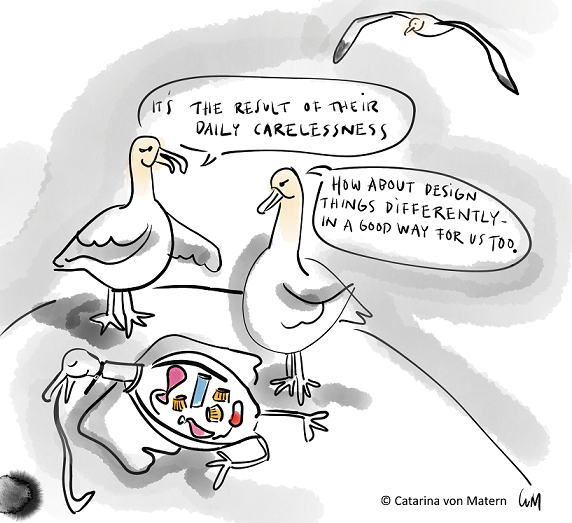
Impacts
Marine litter is a global problem known to be harmful to organisms and to human health. Mechanical impacts from interactions with litter are indisputable. However, especially small, persistent plastic particles, so-called microplastics (fragments less than 5 mm in diameter), can be ingested by a wide range of organisms and may cause adverse physical and toxicological effects on biota. Also biodegradable plastics as an alternative solution may not degrade in the intestines of marine species. Additives in plastic particles can even absorb pollutants from the surrounding sea water and - once ingested - be transferred to tissues and increase the dangers of the "background pollution".
Besides its impacts on biodiversity, marine debris also has socio-economic impacts and can lead to economic losses, such as for fishing and shipping industries, and for recreation and tourism.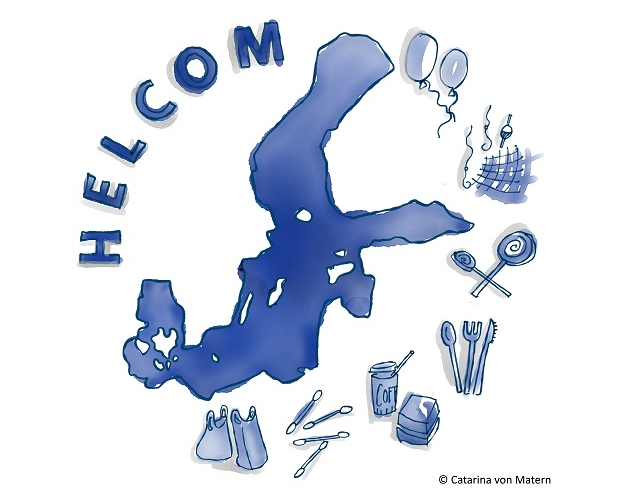
HELCOM - Regional Action Plan
HELCOM (Baltic Marine Environment Protection Commission - Helsinki Commission) was established to protect the marine environment of the Baltic Sea from all sources of pollution through intergovernmental cooperation. A Regional Action Plan for Marine Litter was adopted in 2015 and aims to significantly reduce marine litter by 2025, compared to 2015.
One action of this plan outlines to “establish a dialogue and negotiate on solutions with business and industry to (i) develop design improvements that reduce the negative impacts of products entering the marine environment, and (ii) reduce over-packaging and promote wise packaging”. -
Aim of the workshop
Marine litter has close ties with how we produce and consume products.
In the Baltic Sea Area, the Helsinki Convention on the Protection of the Marine Environment of the Baltic Sea Area (HELCOM) has set out a Plan of Action to prevent marine litter. One of the actions is to understand the role that ecodesign can play in reducing or preferably prevent marine litter. The results of the workshop will directly be used to develop measures and to create solutions for the issue. It is also aimed to create a network of interested stakeholders that facilitates future cooperation between designers, industry representatives, researchers and other interested stakeholders.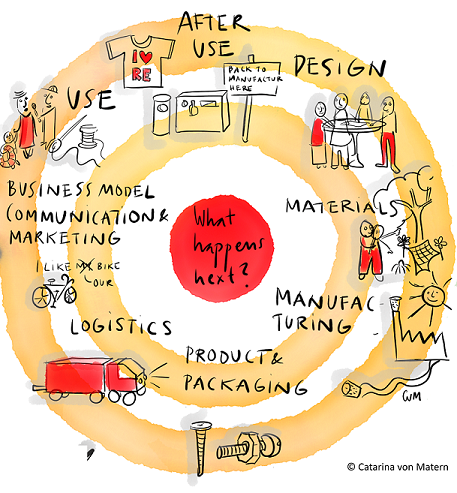
Key questions
» How can product design contribute to prevent marine litter?
» How can products be designed in a way that, should they end up in the oceans, they cause as little damage as possible?
» What is the role of product design in the bigger sustainability and circular economy context?
» What do designers, product, service developers and engineers need to know in order to contribute in an adaquate way to marine litter prevention?
» What are opportunities and limitations of sustainable design for marine litter? What are supportive systems? Which further framework conditions are needed so that ecodesigned services and products reach their objectives?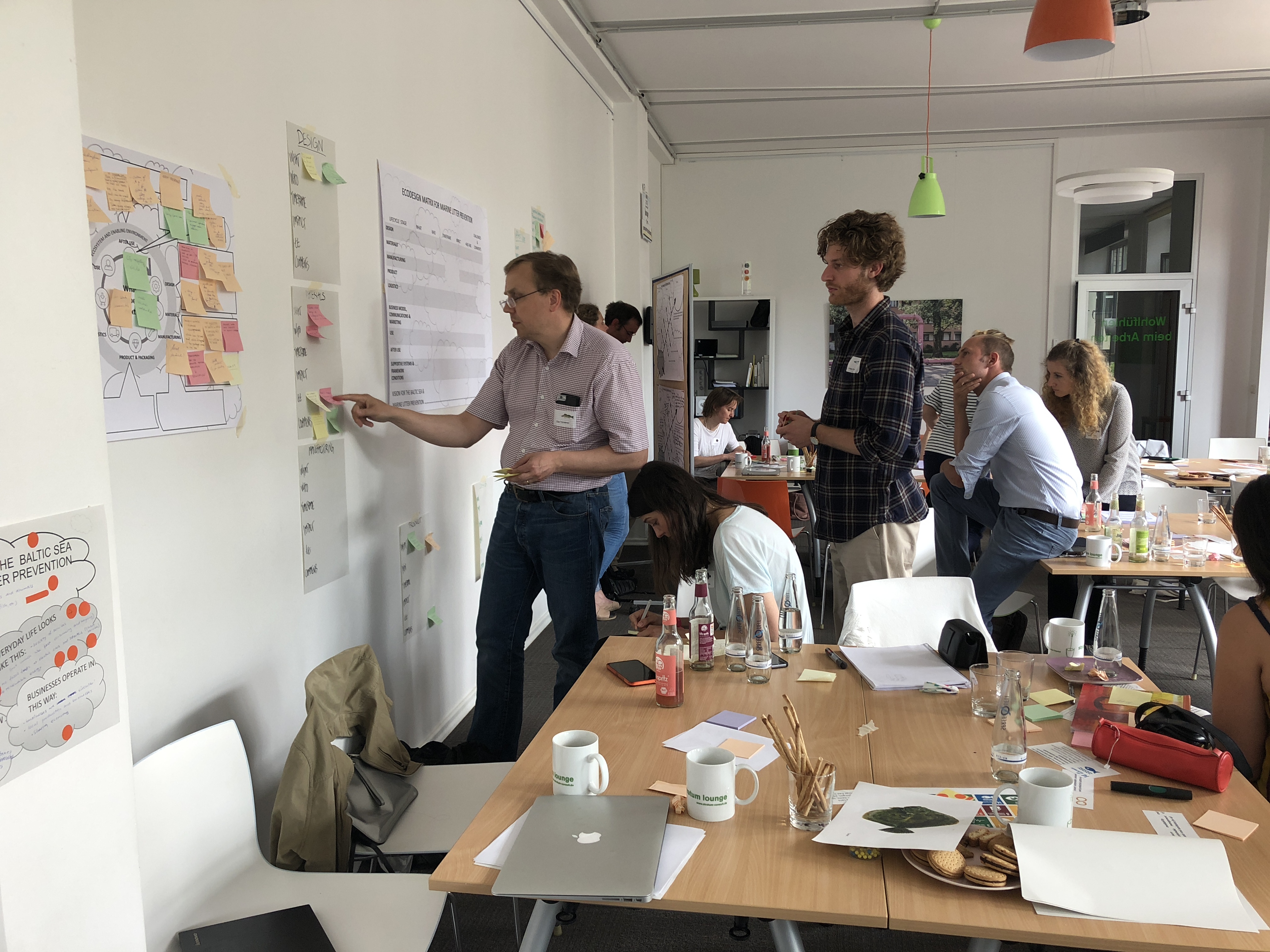
When, where, for whom?
We invited designers, business and industry representatives, researchers and authorities from the Baltic Sea region to take part in this workshop and discuss and develop solutions for these urgent issues.
DATE:
Friday, 15th June 2018
VENUE:
Berlin, GermanyWorkshop Slideshow
-
Have a short impression what happened during the HELCOM-Interreg-Workshop.
-
Methodology
The workshop, facilitated by Ms. Anne Raudaskoski (Ethica Finland), was organised in plenary and breakout groups and included presentations with question-and-answer sessions as well as interactive group exercises. These exercises were intended as interdisciplinary teamwork to deduce generalisable results from illustrative, product-related case studies, to identify points of common agreements or disagreements and to exchange experiences.
-
Opening
The workshop was opened by Mr. Conrad Dorer on behalf of the INTERREG-project EcoDesign Circle and Ms. Marta Ruiz of the HELCOM Secretariat. Ms. Ruiz introduced the Helsinki Convention, its instruments for implementation and provided an overview of the HELCOM Regional Action Plan on Marine Litter, which forms the basis for taking actions on marine litter and ecodesign. Action RL 5 of the HELCOM Regional Action Plan on Marine Litter outlines to “establish a dialogue and negotiate on solutions with business and industry to (i) develop design improvements that reduce the negative impacts of products entering the marine environment, and (ii) reduce over-packaging and promote wise packaging”.
-
Presentation on Marine Litter
Ms. Stefanie Werner of the German Environment Agency gave an introductory presentation on marine litter. She outlined that marine litter is any solid material which has been deliberately discarded, or unintentionally lost on beaches and on shores or at sea, including materials transported into the marine environment from land by rivers, draining or sewage systems or winds. She also outlined the top marine items which are She also outlined the top marine items which are nets and ropes, plastic caps and lids, cigarette butts, crisp packets and sweet wrappers, lolly sticks, strings and cords with a diameter < 1cm, cotton bud sticks, plastic drink bottles, plastic food containers, balloons, plastic cutlery and plastic bags.
-
Presentation on ecodesign / circular systems
Ms. Anne Raudaskoski (Ethica Finland) set the basic understanding of what is meant by ecodesign and circular systems. She commenced by presenting a quote from Peter Seeger who outlined “If it can’t be reduced, reused, repaired, rebuilt, refurbished, refinished, resold, recycled or composted, then it should be restricted, redesigned or removed from production”. Subsequently, the concept of the circular economy and its principles were introduced and opportunities for ecodesign were presented. Within the circular economy, materials cycle within the biological and technical cycle and the design life cycle forms the basis of solutions and systemic thinking. Within this context, the relevance of the Sustainable Development Goals (SDGs 6, 11, 12, 14) was outlined. The life cycle served as the basis for subsequent discussions.
-
Group work: Creating a vision
The group aimed to achieve a vision by 2030 in which nothing is designed to be thrown away:
The Baltic Sea is litter-free and healthy, with happy marine and human life, and humans act sustainably in balance with nature. Everyday life is a society of services in which no fossil fuels are used and renewable energy is the main source of power. The underpinning value is that people should reconnect with nature. With regard to policy and regulations, strict guidelines for production, waste management (e.g. ban single-use) and nano/micro-particles are kept in mind, and “no littering” obligations are enforced.
-
Practical example to reduce/reuse packaging
In order to inspire the participants, two designers, Ms. Kerstin Jana Kater and Ms. Karen Rose from Füll, Berlin, Germany demonstrated their product that aims to reduce packaging waste through reusable food packaging.
-
Group work: Going through the lifecycle of the top 10 litter items
In a subsequent group work, the participants were asked to select a product of the top litter items found in the Baltic Sea area based on HELCOM marine litter monitoring assessments and to apply the life cycle thinking approach. The workshop only considered single-use items. The aim of the exercise was to understand what the life cycle of the specific product looks like and how the life cycle thinking can play a role in preventing marine litter.
Find the summarised results here. -
Presentation on Round Table on Ecodesign
Ms. Isabell Schmidt of the German Association for Plastic Packaging introduced the Round Table EcoDesign of Plastic Packaging. She outlined that the Round Table serves as a network and cooperation platform of its members which come from the industry, research organisations as well as consumer protection associations. Ms. Schmidt presented the guideline on ecodesign for plastic packaging which is currently being prepared by the Round Table and highlighted the toolbox, factsheets as well as practical examples that are developed and presented in order to support its implementation.
-
Presentation on Ecodesign Policy
Ms. Anna Karin Jönbrink, from the Swedish research group Swerea, presented the challenges of creating policies for ecodesign by introducing EU instruments that deal with ecodesign and outlining their limitations with regard to ecodesign. A focus of her presentation was placed on the EU Ecodesign Directive as a successful instrument to eliminate worst products. Furthermore, she mentioned that circularity plays a big role in recent development, such as “Closing the Loop - an EU Action Plan for the Circular Economy”. However, she demonstrated insufficiencies and that different regulations stop each other. Consequently, a holistic perspective in policymaking is necessary.
-
Group work: Prioritising actions and creating a path towards the desired future
As a follow-up exercise, the participants were asked to prioritise actions to address the single-use items that they analyzed in the life-cycle exercise. In order to systematize the discussions, a format outlining the path towards the desired future was distributed. It outlined the steps that the participants should include in their discussions. First, the product should be mentioned, then the (2) current situation for the selected single-use item was described and the (3) goal of what should be achieved outlined. Subsequently, the participants were asked to (4) describe the wrong direction of what would be an undesired outcome. In order to prioritise actions, the participants were asked to formulate the (5) action and then to think of possible (6) barriers and how to overcome these. In order to account for systemic issues that arose during the discussions, participants were also asked to (7) note systemic issues and actors that should be addressed and to determine who to involve in order to solve these issues.
Find the summarised results here. -
Ecodesign Matrix for Marine Litter Prevention
In this exercise, the participants were asked to group their findings into a matrix that depicts the challenges of addressing marine litter prevention. Each participant was asked to address the following elements along the product life cycle stages and aspects: 1. Design, 2. Materials, 3. Manufacturing, 4. Product, 5. Logistics, 6. Use, 7. After use, 8. Business Models, communication and marketing and 9. Supportive systems and framework conditions. Each of these elements was to be commented with regard to “what has to be done”, who needs to be involved, needs to act, the timeframe, the impact with regard to marine litter prevention, the costs and benefits of such an action as well as overall challenges and comments.
Find the deduced principles here.
- Methodology
- Opening
- Presentation on Marine Litter
- Presentation on ecodesign / circular systems
- Group work: Creating a vision
- Practical example to reduce/reuse packaging
- Group work: Going through the lifecycle of the top 10 litter items
- Presentation on Round Table on Ecodesign
- Presentation on Ecodesign Policy
- Group work: Prioritising actions and creating a path towards the desired future
- Ecodesign Matrix for Marine Litter Prevention
-
-

Water and air, the two essential fluids on which all life depends, have become global garbage cans.
Jacques Yves Cousteau, Oceanographer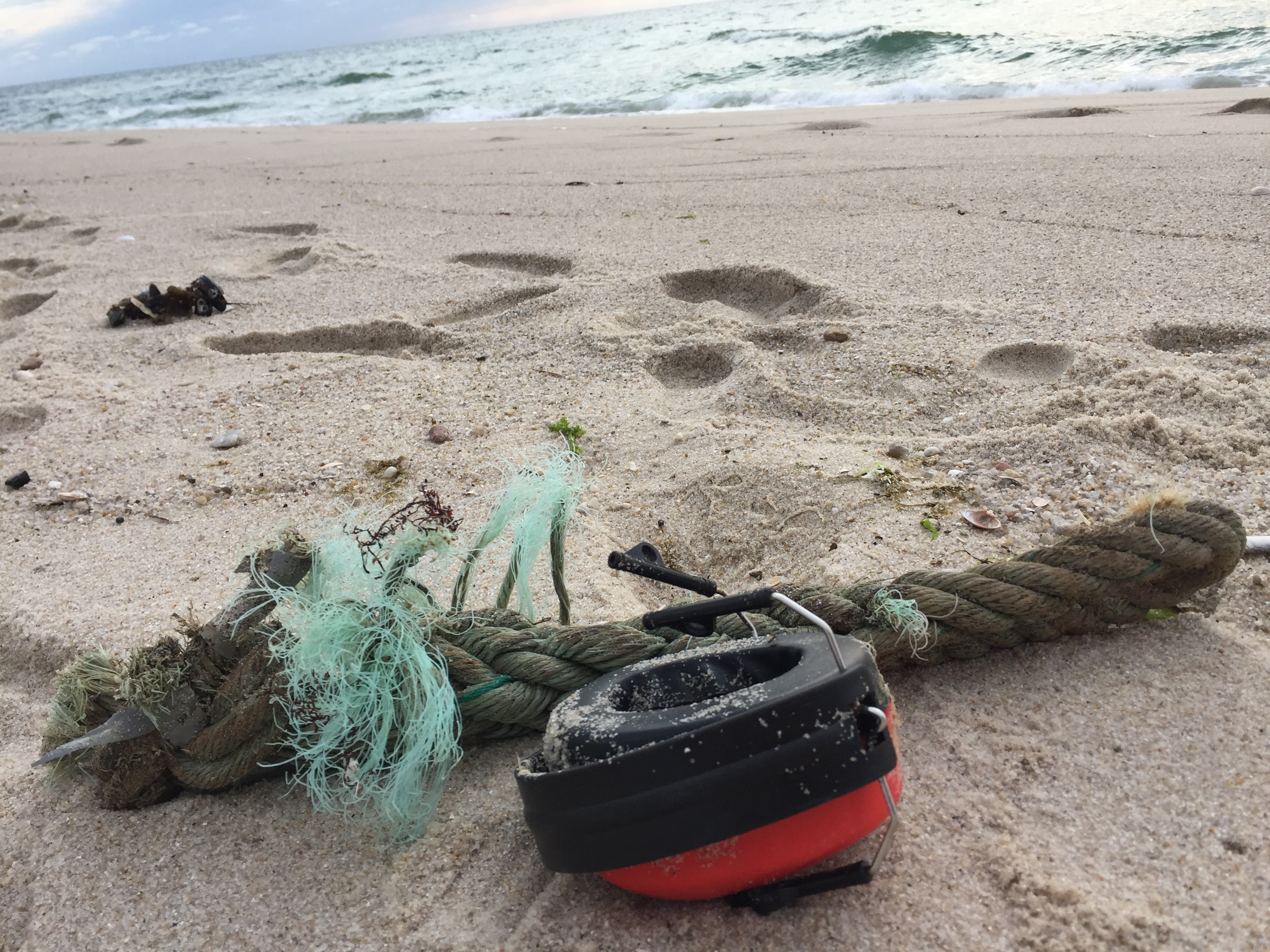
There could be more plastics than fish in the ocean (by weight) by 2050.
The New Plastics Economy: Rethinking the future of plastics - a joint World Economic Forum and Ellen MacArthur Foundation Report
-
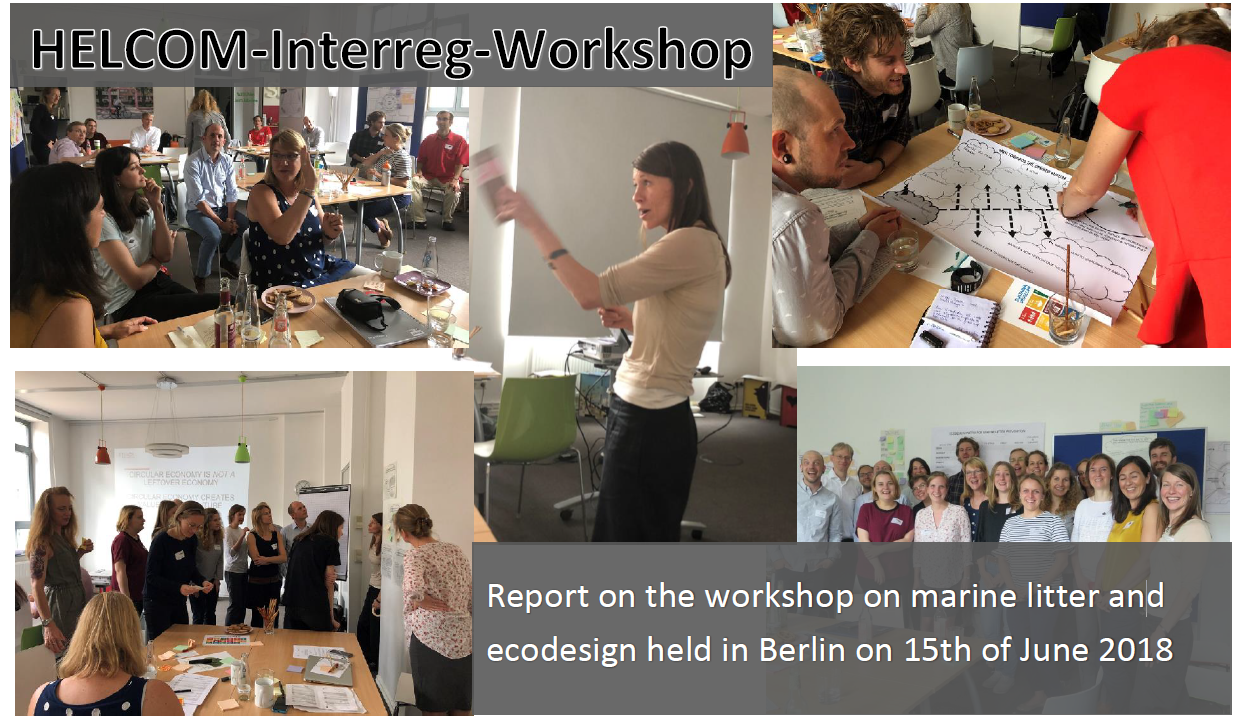 Report:
Report:
HELCOM-Interreg-Workshop | Final Report
Onepager:
HELCOM-Interreg-Workshop | Priciples of Design to Prevent Marine Litter
Annexes to the Report:
HELCOM-Interreg-Workshop | Annex 2
»Path to the Desired Future - Workshop Results
HELCOM-Interreg-Workshop | Annex 3a
»Life Cycle Canvas - Workshop Results
-

